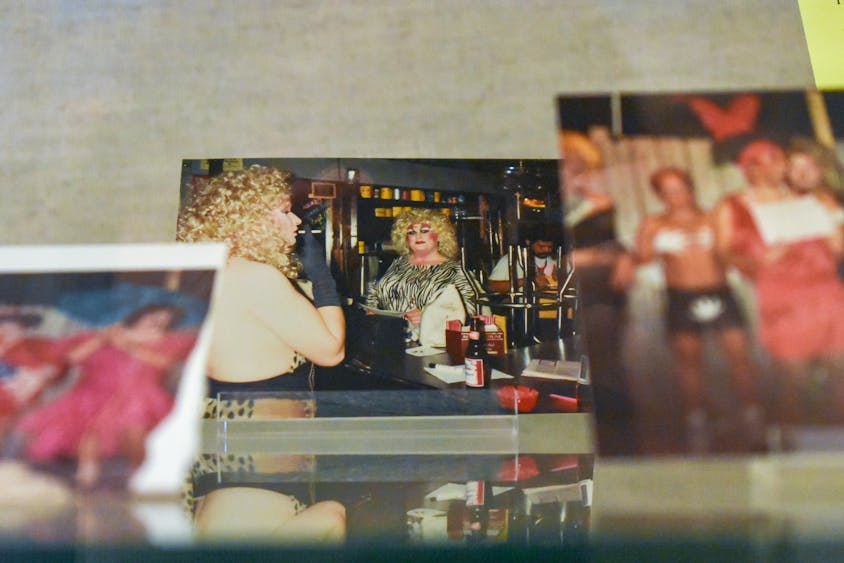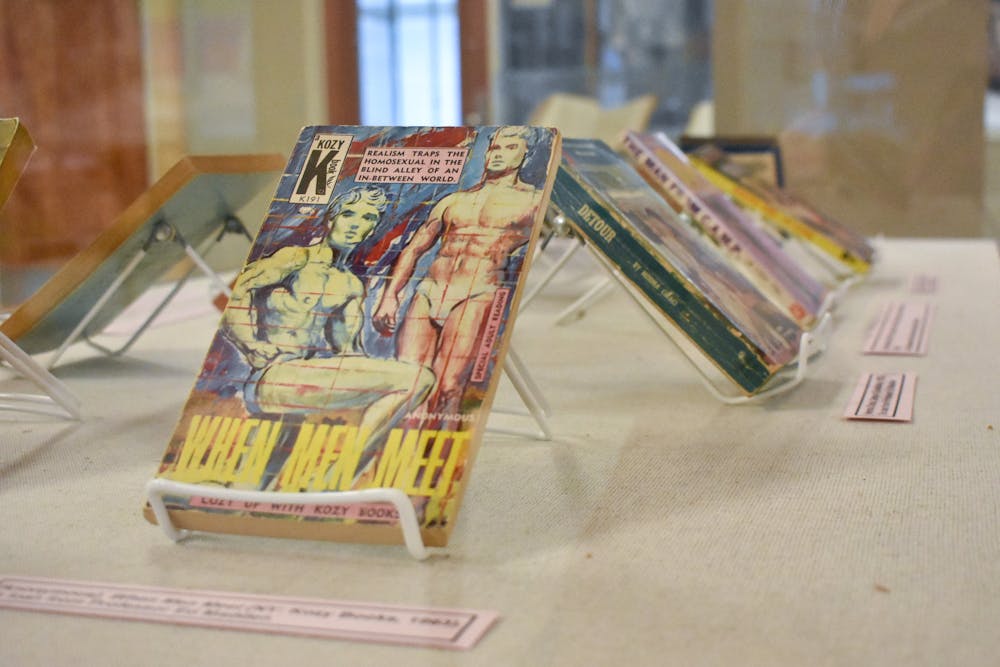Many students, such as first-year social work student Kat Davis, have taken notice of the rainbow-colored ads lining the walls of Thomas Cooper Library, and while they may be left wondering what the ads are for, Davis said she recognizes the message.
"Seeing that outside the library at University of South Carolina, it's like, ‘Wow, okay. These people are taking notice. They see us,’" Davis said. "It's not something that I need to feel ashamed of."
Inside the Hollings Special Collections Library, the "To tell the secrets of my nights and days: LGBTQ+ History in South Carolina and Beyond" exhibit showcases items related to LGBTQIA+ history in South Carolina and connects these displays to ones on the national and global level.
Items in the exhibit include photographs from the first LGBTQIA+ protests in Columbia in the 1980s and the first Pride march in the area in 1990, "camp" romance novels from the mid-20th century, love letters from the early 19th century and poetry from Plato and Ovid.
Graham Duncan, the head of collections and curator of manuscripts at the South Caroliniana Library and co-curator of the exhibit, said "To tell the secrets of my nights and days" shows both sides of LGBTQIA+ history — the severe and the celebratory.
"There are some serious issues, serious themes, in the exhibit, right? I mean, the ACT UP protest, the first Pride march, but there's also just I think celebration just represented in there, and I think that's important," Duncan said. "It's just showing the joy of kind of everyday life."
Michael Weisenburg, the associate director of the Irvin Department of Rare Books and Special Collections for University Libraries and fellow co-curator of the exhibit, said the name of the project refers to the LGBTQIA+ history interwoven in items already owned or exhibited on campus.
"The title, ‘To tell the secret of my nights and days,’ and to sort of this idea that in many ways, there's a history here that is sometimes hiding in plain sight," Weisenburg said. "These are literary works that people are familiar with and have read, but that maybe not everyone's always comfortable talking about within this context."
The well-known classics used in this exhibit bring a voice to a sometimes forgotten side of the story, according to Duncan.

A photo of a patron at Affairs, a bar located at 712 Huger St., sits in the “To tell the secret of my nights and days" exhibit. The photo is among multiple photos of the "camp drag shows" held at Affairs that are now on display until late January 2024.
"It's important to kind of display them in this context, because it matters. To some people, it matters that Whitman is a great American poet, right? But to a lot of people, it matters that Whitman is a gay American poet," Duncan said.
Both curators said the representation of an often-overlooked community and its history was a story that needed to be told.
"Part of this work is to make sure that communities and members of the South Carolina community who have maybe been historically suppressed or maybe not represented as strongly as they could or should be in cultural heritage institutions are being represented and are being archived," Weisenburg said. "The other part of this is to sort of recontextualize our historical holdings and reckon with the fact that that history is already there in the collection, in the library, in the archive."
This exhibit was created with the idea that each item could be understood on its own, so anyone could understand the overarching theme of the exhibit without needing to view it in its entirety. Both curators said it was natural to combine the collections of the Irvin Department and the South Caroliniana Library to create this exhibit based on what they knew of their respective collections and what was loaned to them by the community.
"The Irvin Department stuff has been displayed before, but never in this context, right? I'm almost always using comic books. I'm almost always using Walt Whitman. I'm almost always using the classical Western tradition because we're the traditional antiquarian book department," Weisenburg said. "It made sense when Graham came to us to talk about staging an exhibit like this. It's like, 'Well, of course, we have plenty of stuff to contribute to this exhibit, and it would make sense to connect the two collections through this theme.'"
USC's Irvin Department of Rare Books and Special Collections focuses on any items with historical significance and carries national and global items with long-term importance. However, the South Caroliniana Library focuses specifically on the history of the state of South Carolina and only holds items and records related to the region's history.
"We sort of are able to combine the stuff that's germane in the South Caroliniana Library — that's really more regionally-focused — with the stuff that's in, say, the Irvin Department of Rare Books and Special Collections, which tends to be more (of) the traditional antiquarian book department," Weisenburg said.
The two curators also reached out to the campus community to borrow items that help the exhibit tell the full story of LGBTQIA+ history in a more fluid way than what their two departments could offer alone.
"There are some materials out there that are not currently held by University Libraries, but they're on loan from members of the community, which is also important," Duncan said.
Most students don't realize that they can also use the sprawling collections of the Irvin Department and the South Caroliniana Library as a campus resource. Weisenburg said students shouldn't be too intimidated to reach out.
"I want students to know we're a resource for them," Weisenburg said. "I want them to feel comfortable coming in and seeing versions of themselves here and wanting to come and do research on things that they maybe don't think about when they think of the (South Caroliniana Library) or they think of Rare Books."
"To tell the secrets of my nights and days" will be open until late January 2024 and will be accessible in the Hollings Special Collections Library at the back of Thomas Cooper Library from 9 a.m. to 5 p.m. Monday through Friday. According to the curators, some items may be added or exchanged for other pieces later in the semester.

